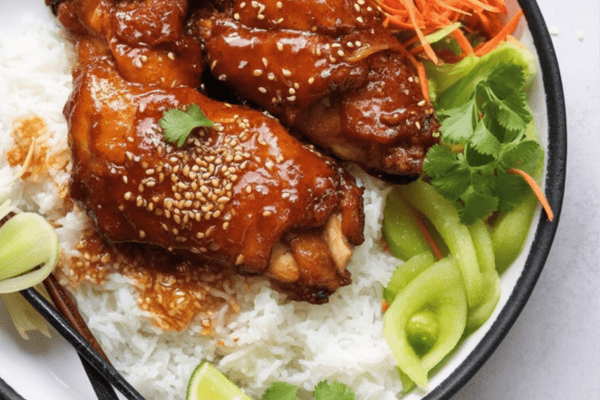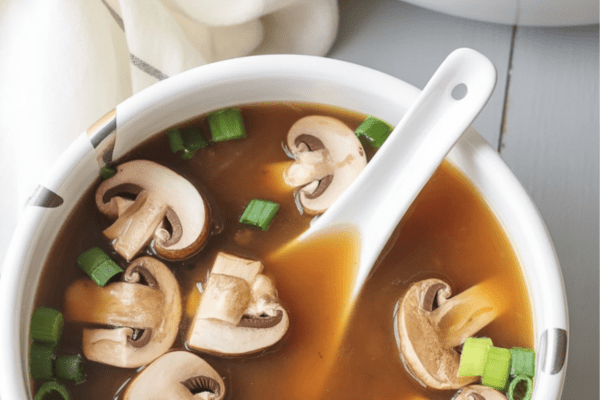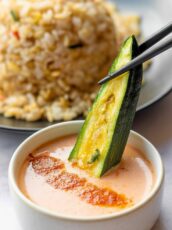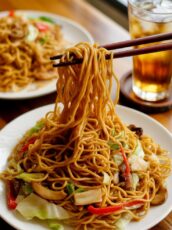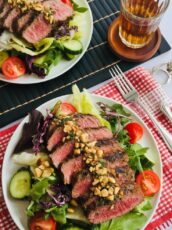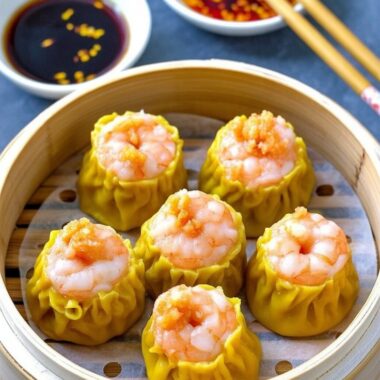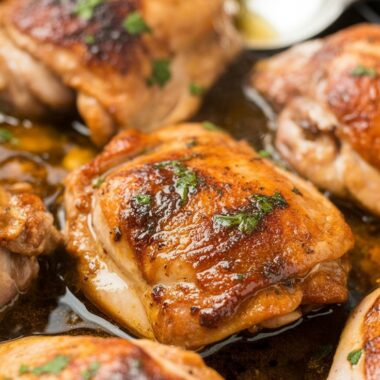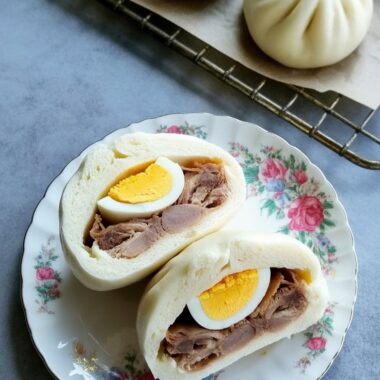This Japanese-style stir-fried noodle dish is pure comfort food. Yakisoba comes together quickly with chewy noodles, crisp vegetables, and a tangy-sweet sauce that clings to everything in the best way. You can toss in any protein you like—from pork belly to tofu—and it’s one of those meals that tastes just as good standing at the stove as it does around the dinner table.
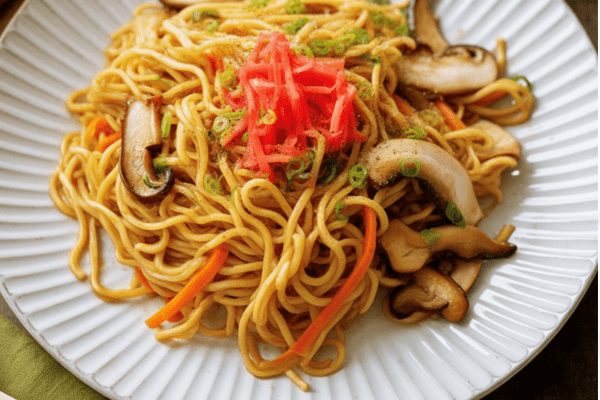
A Taste of Street Food at Home
I remember the first time I made yakisoba at home. It felt like bringing a food stall right into my kitchen—the sizzling noodles, the savory aroma, the little bit of sauce splatter on the counter. What I love most about yakisoba is how adaptable it is. Add pork, chicken, calamari, or shrimp—or skip the meat altogether and use tofu or mushrooms. This dish plays well with whatever you’ve got in the fridge.
What is Yakisoba?
Yakisoba is a classic stir-fried noodle dish from Japan, typically made with wheat-based noodles, meat or seafood, and a medley of vegetables like cabbage, carrots, onions, and bean sprouts. The whole thing gets tossed in a thick, sweet-savory sauce that’s similar to Worcestershire but richer and more layered. It’s often finished with green seaweed flakes (aonori) and pickled ginger for an extra punch of flavor.
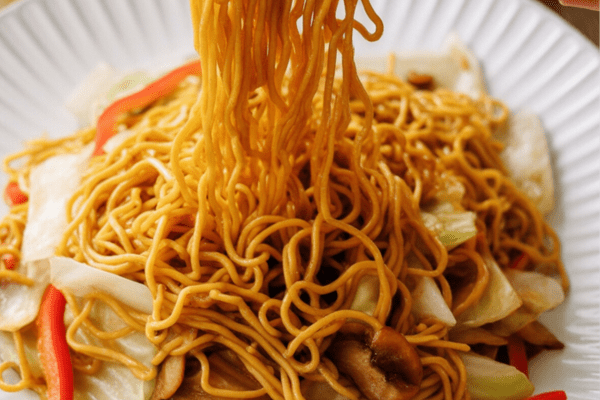
Wait, Is Yakisoba Made with Buckwheat Noodles?
Despite the “soba” in its name, yakisoba doesn’t use buckwheat noodles. It’s actually made with steamed Chinese-style noodles called mushi chukamen—made from wheat flour and kansui (alkaline water). These noodles have a springy texture, similar to ramen, and are pre-steamed so they’re super easy to cook.
How to Make Yakisoba
Ingredients You’ll Need
- Yakisoba noodles: Steamed, wheat-based noodles that are soft and chewy.
- Vegetables: I usually go with sliced onions, carrots, cabbage, green onions, and shiitake mushrooms. You can add bok choy or bell peppers too.
- Protein: Pork belly is traditional, but feel free to use chicken, shrimp, calamari, tofu, or whatever you enjoy.
- Neutral oil: Any flavorless oil will do—canola, vegetable, sunflower.
- Yakisoba sauce: A mix of Worcestershire sauce, soy sauce, oyster sauce (or vegetarian alternative), ketchup, and sugar.
- Optional toppings: Aonori (seaweed flakes), beni shoga (red pickled ginger), or even katsuobushi (bonito flakes) if you’re feeling fancy.
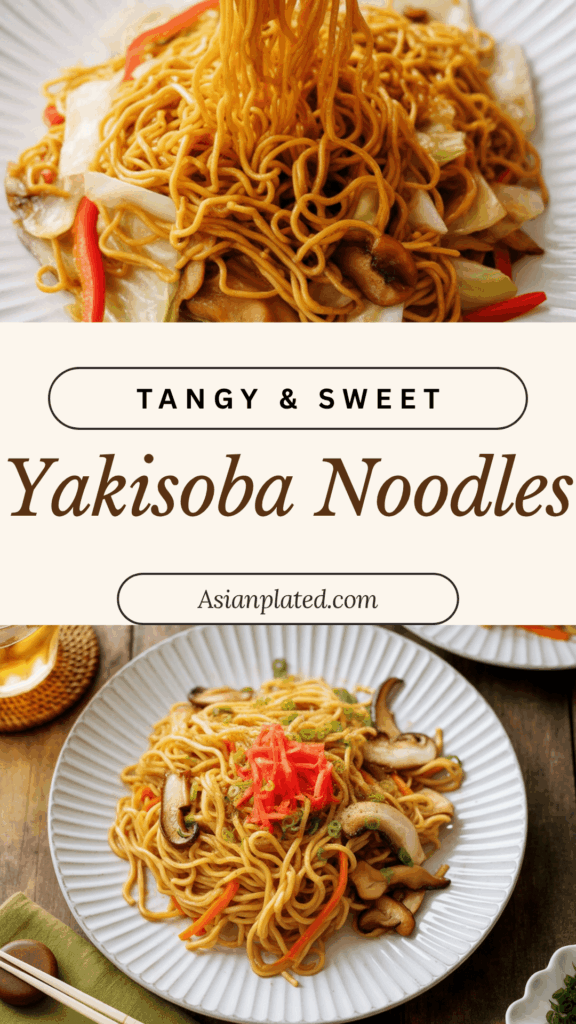
Step-by-Step Cooking
- Prep everything: Cut all your ingredients into bite-sized pieces so they cook quickly and evenly.
- Warm up the noodles: Run them under warm water or zap them in the microwave just to loosen them up.
- Stir-fry the protein: Get it nice and golden in a hot pan.
- Add the tougher vegetables: Think carrots, onions, cabbage.
- Add softer veggies: Mushrooms and green onions go in last.
- Add the noodles back in: Toss everything together.
- Pour in the sauce: Let it coat the noodles and veggies evenly.
- Mix well and serve hot.
Ingredient Variations
In my house, no two yakisoba meals are ever the same. Sometimes it’s ground pork and squid, sometimes just mushrooms and bean sprouts for a lighter feel. You can also throw in sliced hot dogs, leftover roast chicken, or even thinly sliced sausages for something different.
Where to Buy Yakisoba Noodles
Look for yakisoba noodles in Japanese, Korean, or Chinese grocery stores. Myojo is a reliable brand that comes pre-steamed and lightly oiled, ready for the pan. Maruchan is another brand, though the frozen packs can get a little crumbly when thawed.
If you can’t find yakisoba noodles, fresh Chinese stir-fry noodles or even ramen noodles (minus the seasoning packet) can work in a pinch.
Homemade Yakisoba Sauce
Here’s how I make my quick and easy sauce from pantry staples:
- 2 tablespoons Worcestershire sauce
- 1 tablespoon oyster sauce (or vegetarian stir-fry sauce)
- 1 tablespoon ketchup
- 1 tablespoon soy sauce
- 1 teaspoon sugar
Double or triple it depending on how much you’re cooking. I like my noodles saucy, so I always make extra and adjust as I go.
Tips for the Best Yakisoba
Use a large pan or griddle
The more space your ingredients have, the better the sear and the less steaming. You want a bit of char—that’s where the street-food flavor comes from.
Cook in stages
Start with your protein, then the hard vegetables, and finally the softer ones. This way, nothing turns to mush.
Don’t overload the pan
Too many ingredients = soggy noodles. Keep things simple for the best texture.
Loosen the noodles before frying
If they’re clumped, they’ll break apart in the pan. A quick rinse under warm water usually does the trick.
Frequently Asked Questions
Can I use ramen noodles instead?
Yes, but make sure they’re fresh or steamed—not the dried instant kind. If they’re cooked properly, they’ll work fine.
Can I make it with chicken?
Absolutely. While chicken isn’t traditional in Japan for yakisoba, it’s still delicious. Go for boneless thighs—they have more flavor and won’t dry out as quickly as breast meat.
Fun Yakisoba Variations
- Modern-Yaki: Yakisoba tucked into an okonomiyaki pancake.
- Yakisoba Pan: A soft bun stuffed with stir-fried noodles—a Japanese food stall favorite!
- Omusoba: Yakisoba wrapped in a thin omelette—super filling and fun.
- Yaki Udon: Same idea, but with thick, chewy udon noodles.
- Okinawan Yakisoba: A playful version often made with Spam or sliced hot dogs.
- Shrimp Yakisoba: Toss in shrimp and squid for a seafood-forward take.
- Gluten-Free Option: Use glass noodles or rice noodles instead of wheat-based ones.
Yakisoba Noodles

Yakisoba is a traditional Japanese stir-fried noodle dish featuring a sweet and savory sauce similar to Worcestershire sauce. It can be made with any protein—pork, chicken, shrimp, or calamari. For a vegetarian version, tofu or shiitake mushrooms work perfectly.
Ingredients
For the Yakisoba Sauce:
- ¼ cup Worcestershire sauce (use a vegan alternative if needed)
- 4 tsp oyster sauce (or vegetarian stir-fry sauce for those with shellfish allergies)
- 4 tsp ketchup
- 2 tsp soy sauce
- 2 tsp sugar (plus more to taste)
For the Yakisoba:
- ¾ lb sliced pork belly (or any preferred meat/seafood/mushrooms/veggies)
- ½ onion (approx. 5 oz / 142 g)
- 4 inches carrot (approx. 3.5 oz / 100 g)
- ¼ head green cabbage (approx. ½ lb / 227 g)
- 2 green onions/scallions
- 3 shiitake mushrooms (approx. 1.4 oz / 40 g)
- 2 Tbsp neutral oil (plus more if needed)
- 3 servings pre-steamed yakisoba noodles (16–17 oz / 454–480 g)
- Freshly ground black pepper
- ⅓ cup yakisoba sauce (plus more to taste)
Optional Toppings:
- Aonori (dried green seaweed)
- Pickled red ginger (beni shoga or kizami beni shoga)
Instructions
- Preparation Tips:Gather all the ingredients. Freeze pork belly slices for 10 minutes for easier cutting. It’s recommended to double the sauce quantity just in case extra is needed to balance added ingredients.
- Make the Sauce (yields ⅓ cup / 80 ml):Whisk together Worcestershire sauce, oyster sauce, ketchup, soy sauce, and sugar. Taste and adjust sugar if needed. Set aside.
- Prepare the Ingredients:
- Cut pork belly into 1-inch (2.5 cm) pieces.
- Slice onion into ¼-inch (6 mm) slices.
- Julienne carrots into 2-inch (5 cm) strips.
- Slice cabbage into 1-inch (2.5 cm) strips, then chop into bite-sized pieces.
- Chop green onions into 2-inch (5 cm) pieces, halving thick white parts lengthwise.
- Remove mushroom stems and slice caps into ¼-inch (6 mm) pieces.
- 4. Cook the Noodles:Heat a griddle, large pan, or wok over medium heat. Add oil, then place noodles directly on the surface. Flip when the bottom side heats. Gently loosen noodles with chopsticks, being careful not to break them. Once loosened, remove and set aside.
- 5. Cook the Yakisoba:
- On the hot surface, add pork and spread in a single layer. Season with black pepper.
- Stir-fry until no longer pink.
- Add onion and cook 1–2 minutes.
- Add carrots and cook another 1–2 minutes.
- Add cabbage and mushrooms; cook until almost tender.
- Add green onions and cook for 1 minute.
- Place noodles on top of the mixture and drizzle sauce over. Taste and add more sauce if desired.
- Toss to combine all ingredients. Stir until sauce is evenly distributed and noodles are hot. Transfer to plates.
- 6. Serve:Top with aonori and pickled red ginger if desired. Serve immediately.
Notes
- Storage:Store leftovers in an airtight container in the refrigerator for up to 3 days or freeze for up to a month. Thaw overnight in the refrigerator and reheat in the microwave.
Nutrition Information:
Yield: 3 Serving Size: 1Amount Per Serving: Calories: 719Total Fat: 38gSaturated Fat: 10gTrans Fat: 0gUnsaturated Fat: 26gCholesterol: 104mgSodium: 1416mgCarbohydrates: 57gFiber: 8gSugar: 18gProtein: 38g
Asianplated.com, occasionally offers nutritional information for recipes contained on this site. This information is provided as a courtesy and is an estimate only. This information comes from online calculators. Although allchickenrecipes.com attempts to provide accurate nutritional information, these figures are only estimates.
How to Serve
I love piling the noodles onto a big platter and letting everyone dig in family-style. A little red pickled ginger on top gives it a bright pop, and a sprinkle of aonori or sesame seeds never hurts. You can also serve it with a fried egg on top for an even more satisfying meal.
How to Store Leftovers
Got extras? Store them in an airtight container in the fridge for up to 3 days. Reheat in a hot skillet with a splash of water to bring them back to life. I don’t recommend microwaving—they tend to get soggy.
This yakisoba recipe is one of those dishes that always delivers. It’s comforting, flexible, and full of flavor—and once you’ve got the basic method down, you’ll start customizing it your own way. That’s the fun of it. Happy cooking!
Try other recipes:

